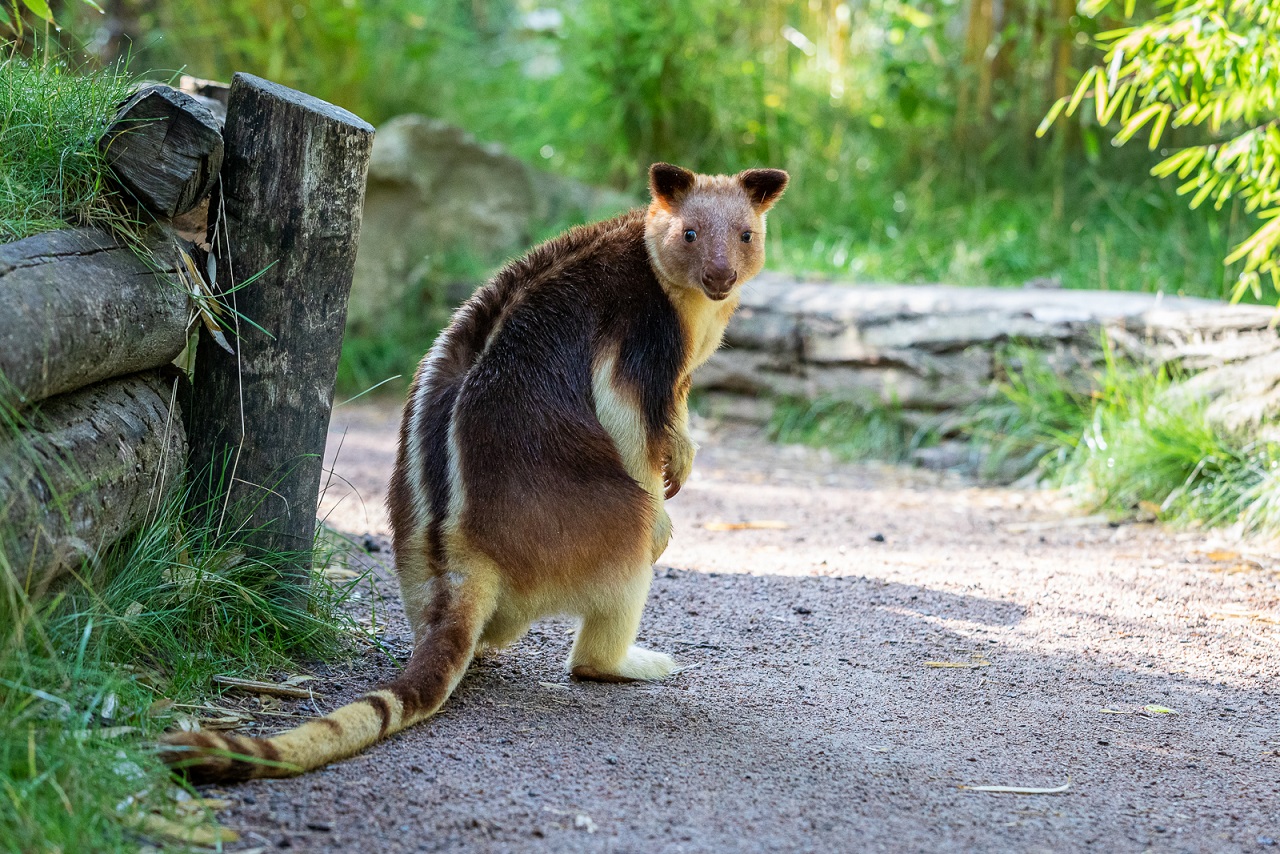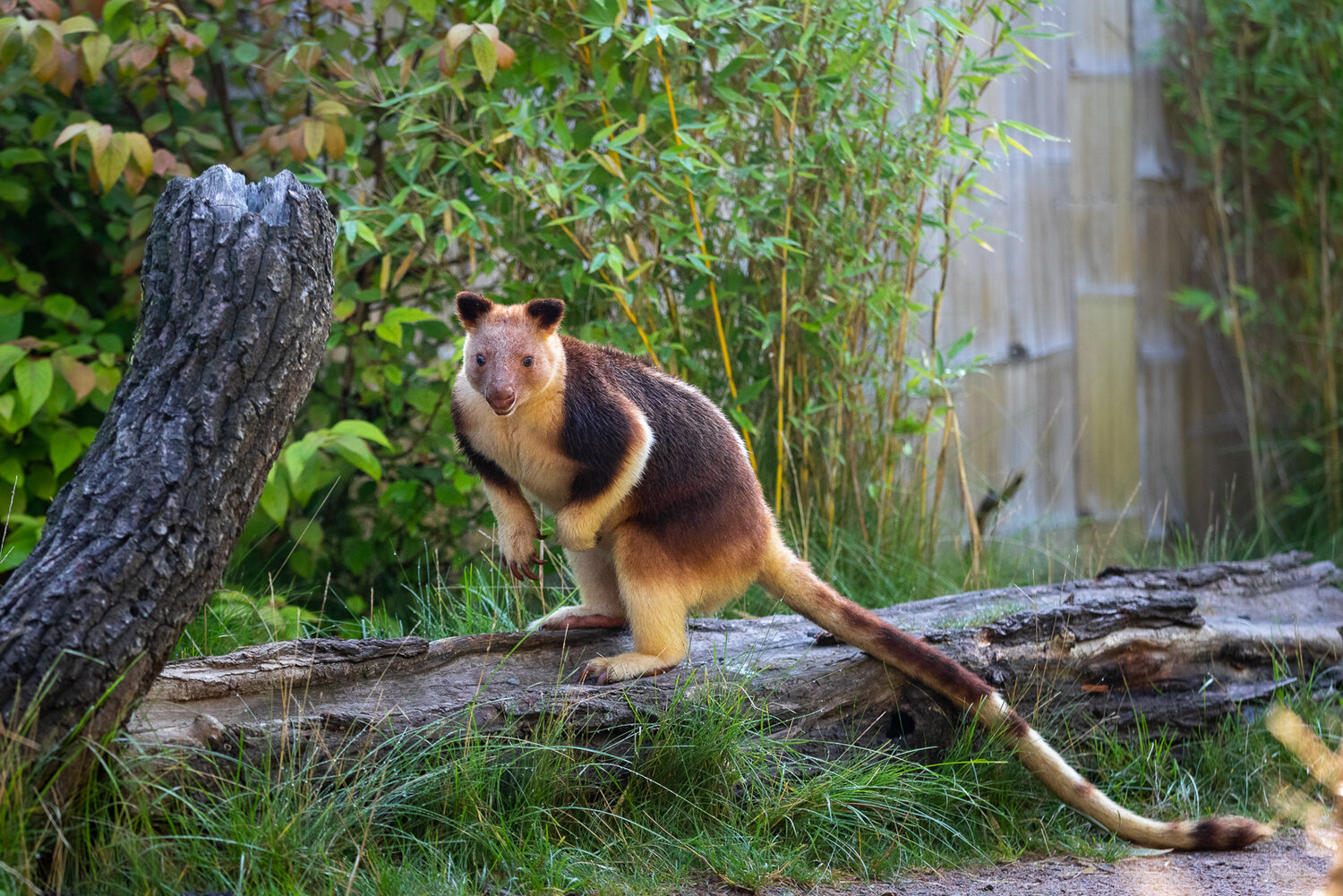Keepers at Zoo Berlin are hoping for a “Mrs Robinson” moment when two-year-old male Goodfellow’s tree kangaroo Tamilo first sets eyes on the much older Nunsi. The 15-year-old female has already met several possible suitors throughout the course of her long life, but has not yet fallen pregnant. Tamilo, on the other hand, is completely inexperienced. Unlike in the cult 1967 movie The Graduate, a relationship between the young male and the mature female is positively encouraged by all those around them. After all, the couple may be able to make an important contribution to saving their species. The Goodfellow’s tree kangaroo is endangered, with only 60 animals currently living in human care around the world, so it’s important to make the most of any chance for new babies. “When Nunsi came here from the zoo in Duisburg around a year ago, we figured her childbearing days were already over, based on what our colleagues there had told us,” says Tierpark curator Matthias Papies. “However, in the meantime we have discovered that Nunsi is still fertile, so we are hoping that Tamilo’s arrival will give her one last chance to experience the joy of motherhood. We must bear in mind that the likelihood of a new baby tree kangaroo is slight, but it’s certainly worth a try!” Tamilo came to Tierpark Berlin from Belfast Zoo in late June. Over the coming weeks the two tree kangaroos will be carefully introduced to one another before a first proper date is organised.
Tree kangaroos first lived at Tierpark Berlin from 1975 to 1989 but were then absent for more than 30 years – so that made the return of the friendly marsupials an even more joyful event. It was a grey subspecies that lived here in the past, but now the rusty red fur of these Goodfellow’s tree kangaroos is bringing a dash of colour to the historic Alfred Brehm building. They are housed in the same habitat as the dusky pademelons, which also come from New Guinea.
Goodfellow’s tree kangaroos are skilled climbers that can jump from tree to tree over a distance of several metres. But unlike their famous relatives in Australia they cannot jump long distances on the ground. In their native home in the mountainous rainforests of New Guinea, they only visit the forest floor to drink and mate – and occasionally to forage. Their diet consists of leaves and fruits. The animals live to be 15 to 23 years of age. Tierpark Berlin has been part of the Global Species Management Project for Goodfellow’s tree kangaroos since 2020,” says Zoo and Tierpark Director Dr Andreas Knieriem. “We are looking forward to welcoming visitors to our new Rainforest House and getting them excited about helping save this fascinating species.”
Of the 14 species of tree kangaroos known worldwide, two live in Australia and 12 in Papua New Guinea. While Goodfellow’s tree kangaroos are critically endangered, the situation is even more serious for their relative, the Scott’s tree kangaroo or tenkile. “No zoological facility in the world currently keeps this species, which means it has no reserve population,” says Knieriem. It was only in 1989 that the elusive animals were first scientifically described. Because sightings were so rare, their population was estimated to be little more than 100 individuals.
Background: Tenkile conservation efforts
Tierpark Berlin supports the efforts of the Tenkile Conservation Alliance to ensure the long-term protection of the animal’s habitat in Papua New Guinea. In addition to field research and habitat protection, this work includes improving living conditions for local people by equipping villages with drinking water tanks, promoting alternative sources of meat, and helping provide access to education.
Today, there are some 300 Scott’s tree kangaroos living in the forests of Papua New Guinea – still an alarmingly low number. The species has an extremely limited habitat: it has only ever been spotted in the dense rainforests of the Torricelli Mountains in Sandaun Province, an area it shares with two other species of tree kangaroo. Its total habitat is probably no larger than 125 km2.

